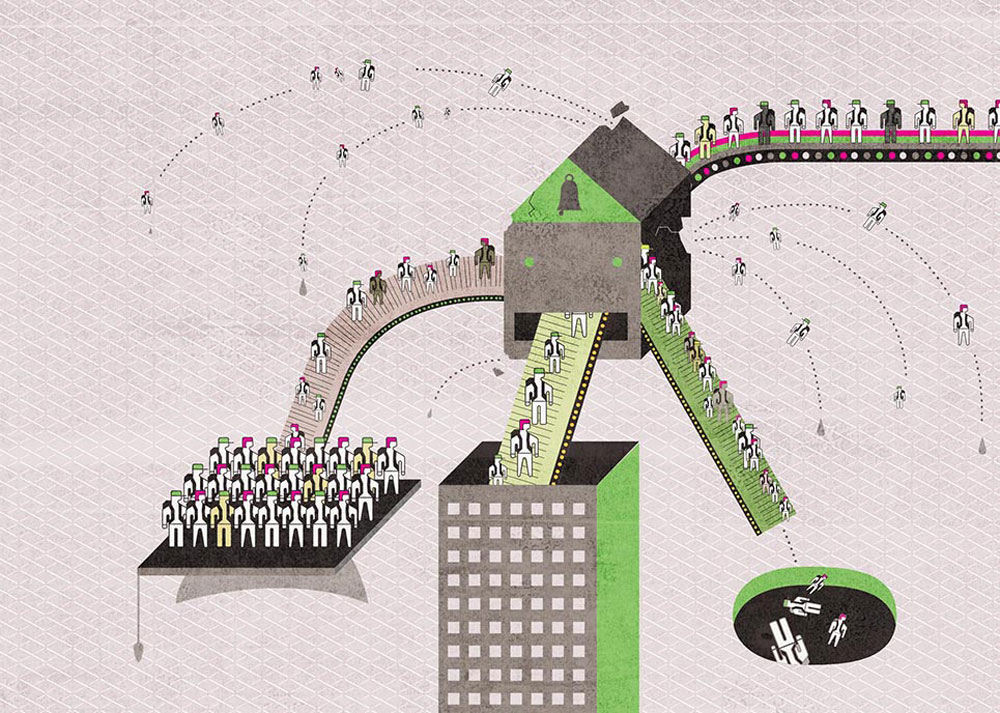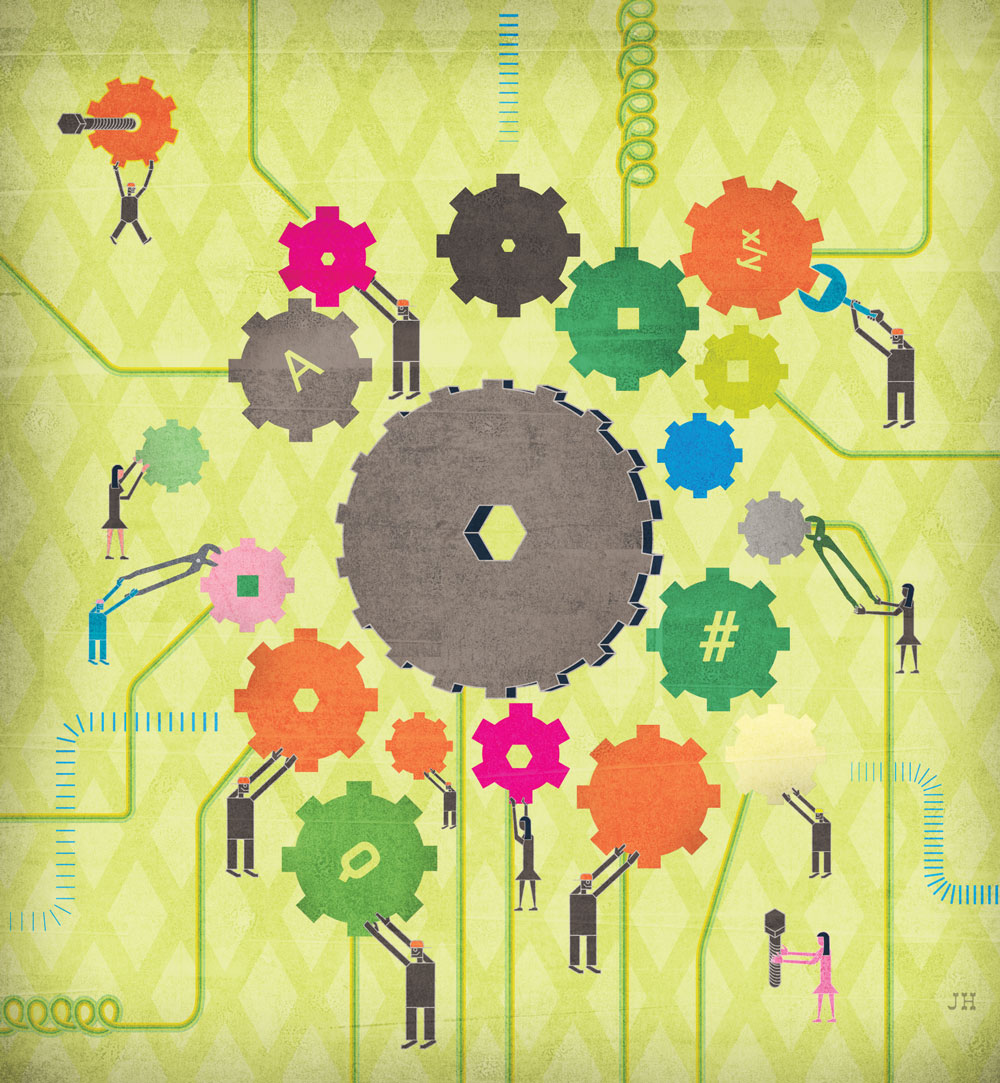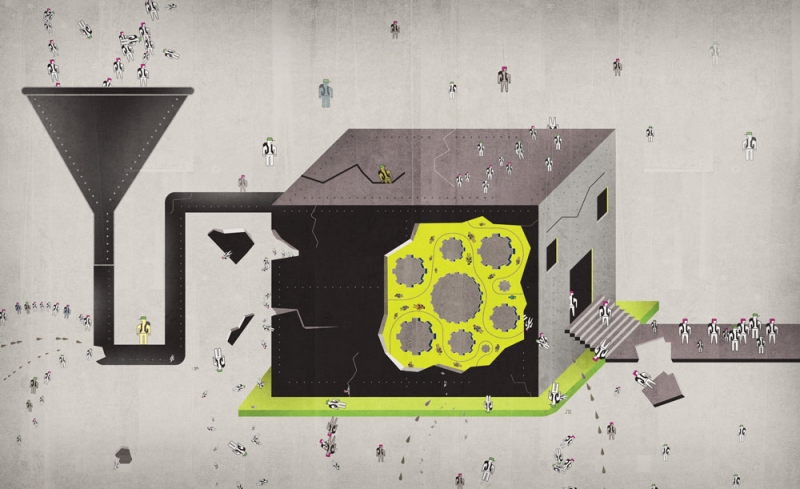My daughter, Erin [not her real name], dropped out of school in Grade 10.
“Dropout” is a term I hate, but I’ll use it here for the sake of simplicity. Although she was a strong student in elementary school, once Erin got to Grade 7, she began her gradual and, for me, excruciating disengagement from school.
My husband and I did everything in our power to keep our daughter in school. We hired counsellors for Erin to see if she had underlying mental-health problems, and counsellors to help us be more effective in supporting her and to contain our anxiety. We put her through educational testing, offered tutors, offered to let her change schools.
We were lucky to be in a position to afford these services, which many people can’t. But they didn’t work. We had felt, as parents often do, that the power to improve things was in our hands, but this simply wasn’t true.
Erin took a less-traditional route to get there – first doing not much of anything, then working in the restaurant industry and then travelling – but now, at the age of 26, she is in her third year of university. I look back and think it didn’t have to be so hard.
Most of the current stay-in-school initiatives ignore school structure and purpose and instead focus on changing individual students. These programs provide bursaries, mentors (usually outside of the school), personal and career counselling and more. All of these things are helpful on occasion and some students do complete high school because of them; however, they don’t address the problems with school itself, with the result that not even 75 per cent of Calgary students complete high school in three years.
Often the goal of these initiatives is to let students know that a high school diploma is needed to get into post-secondary education, which is needed for rewarding work and economic success. There isn’t a student who hasn’t had this drilled into his or her head, if not at home, then by peers, the media and by the school itself.
Instead of putting more energy into ever-more-elaborate stay-in-school programs or raising the legal dropout age, it’s time to make school itself better for all students. To understand the structure of our current school system and whether it serves students today, it helps to know the history of its development.
The Structure of Our Current School System
The Industrial Revolution required a large pool of docile, young factory workers who were literate enough to do their jobs. Factories required a shift from agricultural time to highly structured industrial time. They also required people to work on the assembly line who didn’t ask questions or behave according to whim. An ability to quickly follow arbitrary rules was important; individuality was not.
To this day, most of our schools are extremely tradition-bound, and it could be argued that industrial indoctrination continues even now. Just look at the rigid hierarchy of authority, the regimented school day, complete with bells signalling time to move to the next activity and the emphasis on following instructions rather than creativity.
Democracy in the Classroom
The question is whether we need more factory workers or, instead, a school system that helps create lifelong learners and strong individual thinkers. Joe Bower is a Red Deer-based school teacher who has become an advocate for an overhaul of the school system in part through his blog, For the Love of Learning.
“If a few [students] left, we could attribute that to individual character flaws, but not with the numbers we are seeing,” he says. “School is not done by students, but to students, often through passive learning. The choices shouldn’t be student anarchism versus teacher dictatorship, but the possibility of a third choice – democracy. The curriculum must be flexible.”
The notion of democracy in the classroom is about emphasizing that students should be closely and extensively involved in making the decisions that affect them. In the end, teachers can force students to complete an assignment, but they can’t compel students to learn effectively or care about what they are doing. Learning requires the consent of students, and, by encouraging real and meaningful decision-making, students are more likely to flourish. In our current system, where students are forced into many of their courses, where they are streamed into different categories and where much of how they spend their time is predetermined, dropping out is one of the few meaningful choices many students have.
Cathy Faber, superintendent and chief information officer of Learning Innovation with the Calgary Board of Education (CBE), agrees with Bower. “We have to have a laser focus on keeping students engaged,” she says. “We need to reframe the high school experience for all students. Personalizing learning is the key.”
The Current Rigidity in Schools
The fact the CBE has someone like Faber is a hopeful sign, but it’s a long road ahead. Faber stresses that students need to have the confidence and licence to speak up when school isn’t working. “The structure of school has to change. I admit school teaches children to be compliant,” she says.
“Not dropping out” isn’t the same as being engaged in or interested in or caring about what you do all day. Lots of students are at school physically and maybe even getting passing grades, but that is all.
Having more flexibilty in the curriculum to allow students to pursue their interests is one way to keep them learning. Another is to give students real choice when it comes to what their own level of learning will be and what they want to do in their future. Currently, Alberta students are “streamed” into different academic levels. This sorting of students, starting in Grade 10, is based on guidelines that teachers and administrations follow to assess students’ abilities and determine what classes they should be placed in.

Academic students – those who are deemed “smart” by school standards – have the option to choose from advanced-placement options and International Baccalaureate (IB) programs that offer pre-university or university credit. Such students may be streamed into gifted and talented programs earlier in elementary school.
There are also streams for your average student seeking university entrance and another stream of courses offered for those pursuing polytechnical school or college. “Knowledge and Employability” courses lead to a “Certificate of High School Achievement,” (not to be confused with a high school diploma) that is supposed to prepare students for the workplace rather than university. No matter what it’s called, students understand this is the dead-end stream. And, once they find themselves placed there, many may decide that they might as well get right to working if that is all high school is preparing them for, anyway.
Erin did.
When I interviewed her for this article, she was blunt in her assessment. “I thought, ‘Who were [the high school administrators and teachers] to dictate the rest of my life just because I didn’t do much in junior high?’ ” Erin says. “I was put in the shittiest classes that wouldn’t get me into university. So why would I bother with Math 14 when it wouldn’t help me in the future?”
In Erin’s case, it seems nonconformity and misbehaviour got her placed in lower-stream classes, regardless of her ability. Once she realized the courses she was offered wouldn’t take her anywhere, she decided not to bother doing them anymore.
Albertans seem to accept streaming as simply how school operates and has always operated.
The Inequality of Streaming
A 2000 study conducted by Harvey Krahn and Alison Taylor at the University of Alberta found a large provincial difference in the percentage of high-school students who had all post-secondary options open to them. Leading the pack was Saskatchewan, where 87 per cent of high school students had the option of choosing from all post-secondary choices, followed by British Columbia with 66 per cent and Ontario at 64 per cent. The lowest was Alberta at only 59 per cent. This means almost half the students in this province are not able to choose from all available options but instead have had doors closed to them before they are even 18.
Streaming recreates social inequality and limits future potential. This makes it an important social-justice issue for all Canadians. Canadian research shows students from wealthier and more-advantaged family backgrounds are more likely to enter academic programs, while students from poorer and disadvantaged family origins enter vocational programs in disproportionate numbers. The Canadian Education Association has taken a strong stand against streaming for these very reasons.
Both Bower and Faber agree school is most adept at sorting students and that, once a student is locked into a particular stream, it’s hard to move out of it.
Hope for the Future of Our Schools
While Krahn and Taylor’s findings seem to suggest Alberta may be the furthest behind the innovation curve for education in some respects, there is reason to be hopeful for change.
The Creative Education Accelerator (CEA), being incubated at the Banff Centre, is trying to build a new way of educating students that tailors the curriculum and offerings to each student. The CEA works with schools, parents and students to create individual creativity plans for each student and maintains a record of their progress along with the traditional report card. The program’s administrators are now working with the high school in Banff but hope to spread the program across Canada and the entire globe.
“Creative confidence is as important as literacy,” says CEA project lead Colin Funk, who boils creativity down to “using imagination to create something new.” It’s something we are all capable of, but we need to develop confidence in our ability to do so.
The CEA’s goal is to complement what schools currently offer by connecting students working with artists, community leaders and other visionaries. Funk sees great potential for the project to help hold onto marginalized students and decrease the dropout rate as kids get excited about what the CEA has to offer.
Perhaps the CEA could have helped keep James Mutch, now 22, in school instead of leaving late in Grade 10.
“They would have had to restructure the entire thing for me to stay,” he says. Although he was a student at CBE’s Alternative High School when he dropped out, Mutch recalls it wasn’t a lot different from the regular high school program. “There was a bit more respect, but still students didn’t call the shots. It was all the same curriculum as at my other high school.” And that was the problem.
Mutch recalls many of his teachers noted on a report card, “James doesn’t apply himself.”
“That’s because I couldn’t bring myself to do it,” he says. “I couldn’t connect with the information presented. Around Grade 9 and 10, I asked, ‘What does this mean to me? How does this relate to big problems?’ I knew I’d regret quitting, but not enough to stay.”


Engaging With Albertan Students
In addition to this new work being done to address creative curriculum, the province is also working to engage students and is also coming to the realization that getting meaningful feedback from students is key to making the kinds of change that will help more kids finish school.
In 2010, Alberta Education hired the company The Learning Bar to run the Tell Them From Me Effective School Survey as part of the province’s High School Completion Strategic Framework. Administered twice a year to students in Grades 7 to 12, the online survey measures student engagement in the social, academic and intellectual domains. The data is used to monitor progress and promote practices that positively affect students’ sense of belonging, well-being and achievement. The program is an important step in the right direction — it offers schools all sorts of data on student engagement. But one of the things the survey shows is schools vary greatly in how good they are at engaging students, and not all of the province’s schools are involved in the survey.
One of the findings after the first year of the Tell Them From Me survey in Alberta was that on all measures — except positive relationships at school — the percentage of students classified as engaged dropped dramatically between Grades 7 and 12. Examining the student-teacher relationship needs to be put under the microscope if we want to keep kids in school longer.
Stay-in-school initiatives often involve mentoring programs that match students with community members. Any caring adult in a youth’s life is invaluable, but this doesn’t address what happens at school, where teachers, counsellors and administrators are an important factor in keeping students engaged.
As Bower puts it, “The hardest children to like or educate are the ones who need us the most.”
Students, especially the most marginalized and the most difficult, need to feel they have a place at school, to feel connected to the adults in the building, to feel someone is on their side. I can’t help wonder what might have happened with my daughter if her teachers had viewed her problems in school as a relationship problem — one they both had to work on.
“If real estate is all about location, location, location, then education is all about relationships, relationships, relationships,” says Bower.
Of course, it goes the other way, too. Not only students but also administrators, parents and society at large need to respect teachers and the work they do. Bower pointed out that school is not only done to students but done to teachers, as well. Teachers in Alberta are bound by the School Act and have little autonomy in making decisions in the classroom.
For example, Grade 7 students must fulfill more than 1,000 different “learning outcomes.” It’s the old industrial model, the “filling of the pail” version of education rather than the lighting of a fire for learning, but it’s what teachers are given to work with. How can they not feel great pressure to satisfy strict curriculum guidelines? Blaming teachers is unproductive, at best.
There are points of progress, but, for the most part, stay-in-school programs focus on students rather than school as the problem. While there are students who will be reached by these programs, they can’t and won’t reach everyone. The biggest advantage of an examination of the failings of school is that all students would benefit, not just those at risk of dropping out.
Bower, whose concern for students runs deep, says it best: “It is a complete failure if we only ask kids to improve without school looking at itself.”

